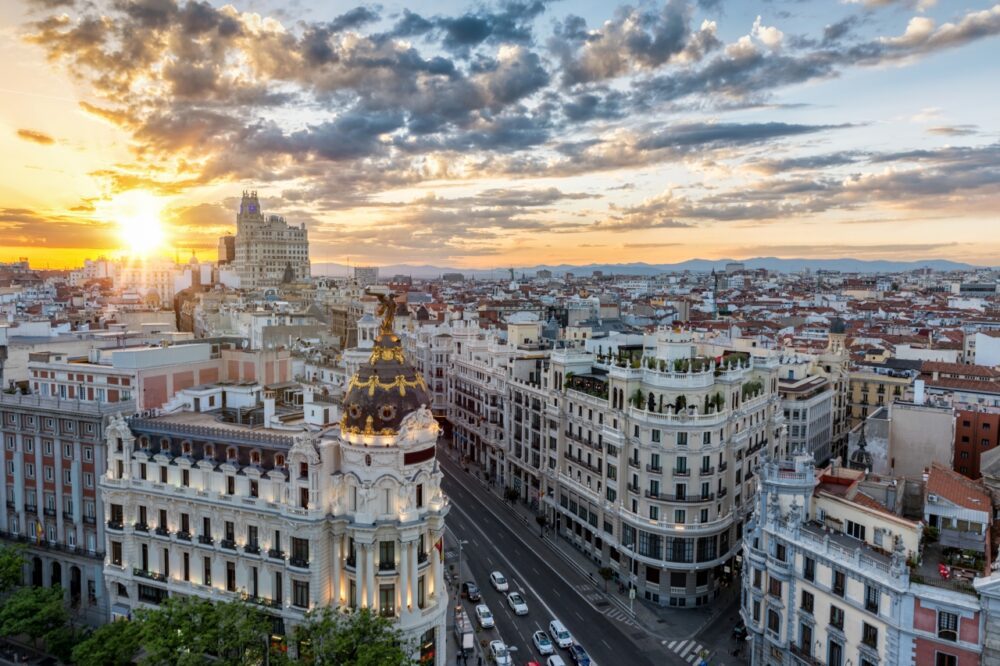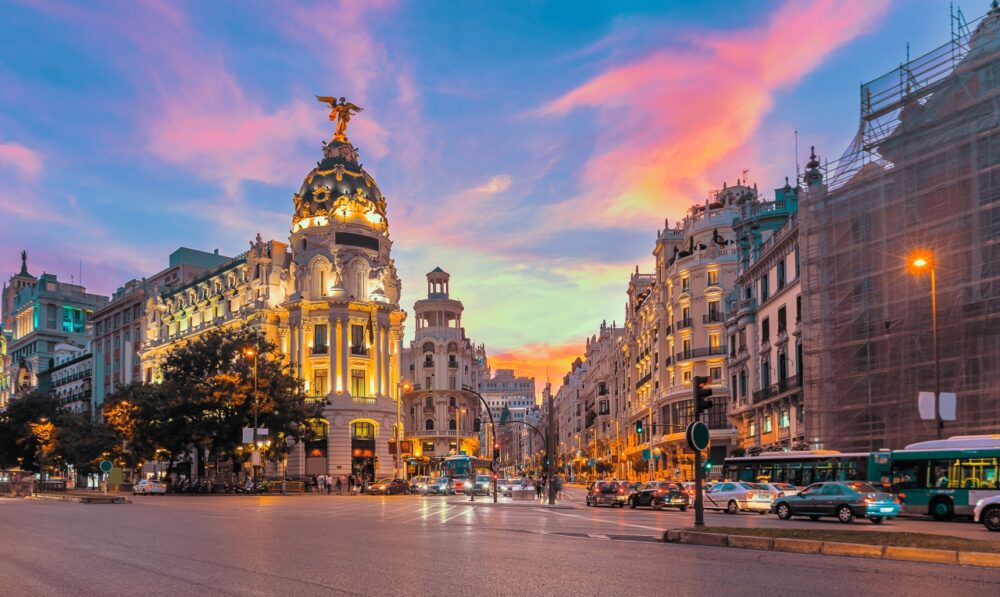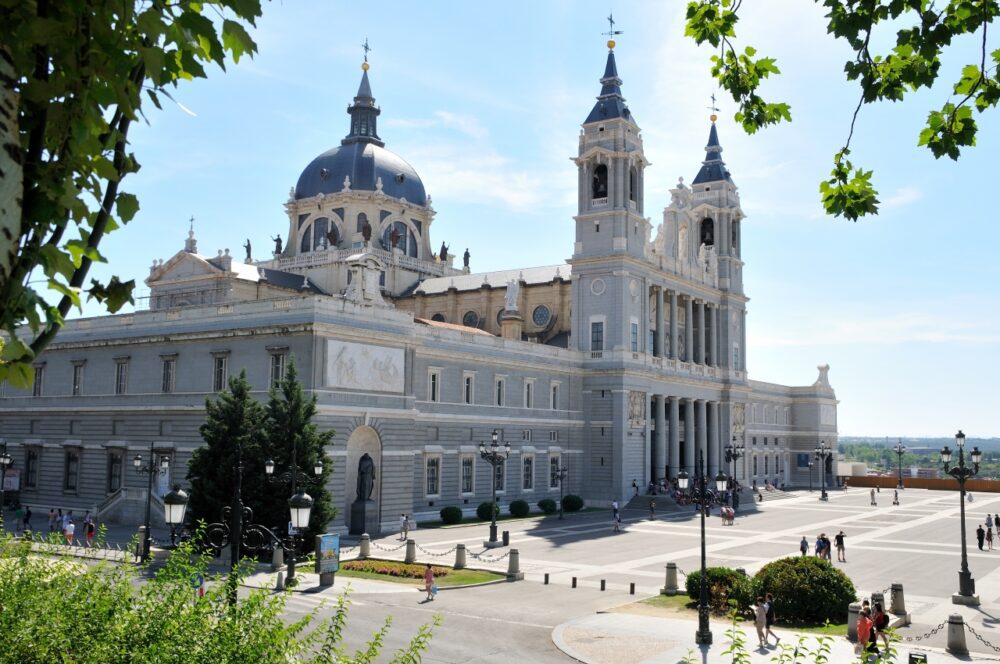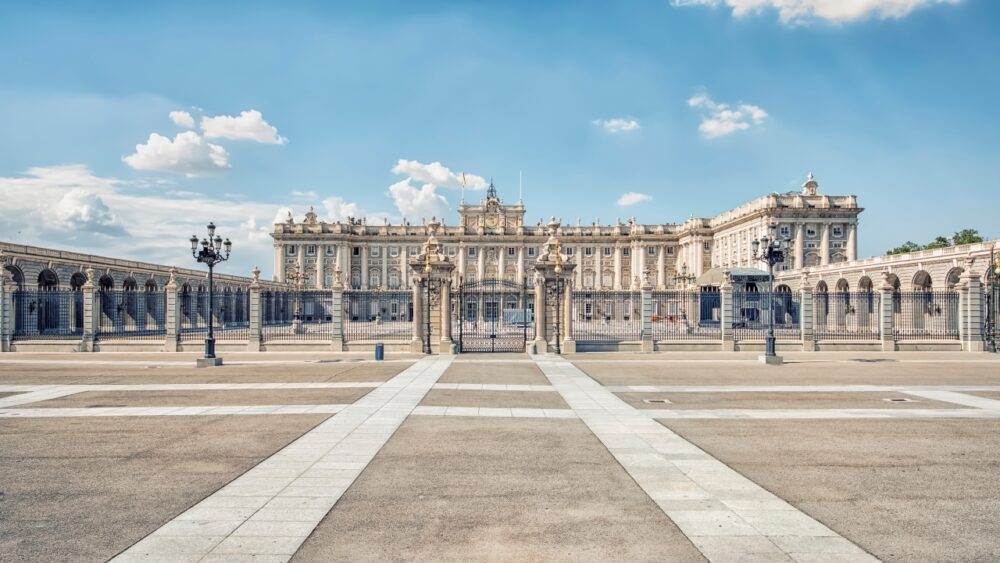
Is Madrid worth visiting? Absolutely! The first time I visited Madrid, I was blown away by its energy, culture, and passion for life. From the bustling streets of Gran Vía to the grandeur of the Royal Palace, Madrid feels like a city that never stops. Whether I was savouring tapas in a lively plaza, admiring masterpieces at the Prado Museum, or simply people-watching in Retiro Park, Madrid left me completely captivated.
As Spain’s capital, Madrid is a city that effortlessly combines history, art, and a modern cosmopolitan vibe. It’s home to some of the world’s most renowned art galleries, including the Prado and Reina Sofia, as well as stunning landmarks like Plaza Mayor and Puerta del Sol. But what sets Madrid apart is its unique energy—this is a city that thrives on late nights, socialising, and a love for food. Add in its vibrant neighbourhoods, like trendy Malasaña and historic La Latina, and you’ve got a destination that offers something for everyone.
But is Madrid worth visiting for you? In this blog post, we’ll dive into the top 10 reasons why Madrid should be on your travel list, from its iconic landmarks to its unbeatable food scene. Plus, we’ll share travel tips to help you make the most of your time in Spain’s lively capital. Keep reading to find out why Madrid is a city you can’t afford to miss.
Table of Contents
Pros – Reasons You Should Visit Madrid
1. A City with a Lively and Exciting Atmosphere

Madrid is one of Europe’s most vibrant capitals, full of energy, life, and a contagious spirit that makes it an unforgettable destination. The city never really slows down—there’s always something happening, whether it’s a street performance in Plaza Mayor, an art exhibition in a world-class museum, or a late-night gathering at a lively tapas bar.
I was immediately struck by the energy of the city, especially in areas like Puerta del Sol and Gran Vía, where people are constantly out and about, regardless of the time of day. Unlike some European capitals that can feel a bit reserved, Madrid is open, welcoming, and full of life. Whether you’re sipping coffee at a plaza, exploring historic streets, or enjoying a long Spanish-style dinner, the city’s electric atmosphere is impossible to ignore.
2. Some of the Best Art Museums in the World

Madrid is home to an incredible collection of art museums, making it a paradise for anyone who appreciates masterpieces from across the centuries. The city’s famous “Golden Triangle of Art” includes the Prado Museum, the Reina Sofía Museum, and the Thyssen-Bornemisza Museum, each offering a unique look at different periods and styles of art.
I spent an entire morning at the Prado Museum and still felt like I had barely scratched the surface. The museum houses legendary works from Spanish masters like Velázquez, Goya, and El Greco, and it’s a must-visit for anyone interested in classic European art. The Reina Sofía Museum, on the other hand, is home to Picasso’s Guernica, one of the most powerful and thought-provoking paintings I’ve ever seen in person. If you love art, Madrid is a city that will keep you endlessly inspired.
3. A Food Lover’s Paradise with Incredible Tapas

Madrid’s food scene is one of the best in Spain, offering everything from Michelin-starred fine dining to humble neighborhood tapas bars serving up delicious small plates. The city is known for dishes like patatas bravas, Iberian ham, croquetas, and gambas al ajillo, all of which are best enjoyed with a glass of Spanish wine or vermouth.
One of my favorite experiences was going on a tapas crawl through La Latina, hopping from one bar to another, sampling small plates while enjoying the lively atmosphere. The Mercado de San Miguel is another great spot for food lovers, with an array of stalls offering everything from fresh seafood to traditional Spanish cheeses. Whether you’re looking for an upscale dining experience or a casual night of bar-hopping, Madrid has something to satisfy every craving.
4. A Beautiful Mix of Historic and Modern Architecture

Madrid’s skyline is a fascinating blend of old and new, with stunning historic buildings sitting alongside modern skyscrapers and contemporary designs. Walking through the city, you’ll come across impressive landmarks like the Royal Palace, the grand Plaza Mayor, and the Almudena Cathedral, all of which showcase Madrid’s rich architectural history.
I was particularly impressed by Gran Vía, often referred to as Madrid’s “Broadway,” which is lined with beautiful early 20th-century buildings and grand theaters. At the same time, areas like the Cuatro Torres Business Area showcase the city’s sleek and modern side. The contrast between old and new gives Madrid a unique character, making it a fascinating place to explore.
5. Lush Green Parks Provide a Peaceful Escape

For a bustling capital, Madrid has an impressive number of green spaces where you can take a break from the fast-paced city life. El Retiro Park is the most famous and serves as a beautiful oasis in the heart of the city, with walking paths, lakes, gardens, and even a stunning glass pavilion known as the Palacio de Cristal.
I spent an afternoon wandering through El Retiro, renting a rowboat on the lake, and enjoying a picnic under the trees. The park is a favorite spot for both locals and tourists, and it’s the perfect place to relax after a busy day of sightseeing. Other great green spaces include Casa de Campo, a massive park that’s five times the size of Central Park in New York, and Madrid Río, a scenic park along the Manzanares River.
6. One of the Best Nightlife Scenes in Europe
Madrid’s nightlife is legendary, and the city is known for its late-night culture, where bars and clubs stay open until the early hours of the morning. Whether you’re into intimate jazz bars, lively flamenco shows, or massive nightclubs, Madrid has something for every type of night owl.
I was amazed at how the city comes alive after dark. Even on weekdays, the streets were buzzing with people enjoying drinks and conversation at outdoor terraces. One of the best experiences was watching a live flamenco performance in a traditional tablao, where the intensity of the music and dance was mesmerizing. If you love nightlife, Madrid is one of the best cities in Europe to experience it.
7. The Impressive Royal Palace of Madrid

The Royal Palace of Madrid is one of the most spectacular palaces in Europe, with its grand architecture, lavish interiors, and impressive collection of art and historical artifacts. It’s the official residence of the Spanish royal family, though it is mostly used for state ceremonies rather than as a permanent home.
I took a guided tour of the palace and was blown away by the grandeur of the rooms, from the Throne Room to the stunning Hall of Mirrors. The attention to detail in the décor, with intricate chandeliers, gold accents, and massive tapestries, was truly impressive. Even if you’re not usually into royal history, the palace is worth a visit just for its sheer beauty.
8. A Strong Coffee and Café Culture
Madrid has a fantastic café culture, where locals take their time enjoying coffee while chatting or reading the newspaper. Whether you prefer a classic café con leche in a historic café or a trendy specialty brew in a modern coffee shop, the city has plenty of great places to sit and enjoy the moment.
I loved stopping at Café de Oriente, which has an amazing view of the Royal Palace, as well as exploring hidden gems in neighborhoods like Malasaña and Chueca. The pace of life in Madrid encourages you to slow down and enjoy the experience, making café-hopping one of the simple pleasures of visiting the city.
9. Easily Walkable and Well-Connected
Madrid is one of the best cities for walking, with wide boulevards, pedestrian-friendly streets, and plenty of scenic routes to explore. Most of the main attractions are within walking distance of each other, and the layout of the city makes it easy to navigate.
When I needed to go further, Madrid’s metro system was incredibly efficient, clean, and easy to use. With affordable tickets and well-connected lines, getting around the city was hassle-free. Even if you’re staying outside the city center, public transport makes it simple to reach all the key sights.
10. A Gateway to Amazing Day Trips
Madrid is perfectly located for day trips to some of Spain’s most beautiful towns and historic sites. Places like Toledo, Segovia, and Ávila are just a short train ride away, offering incredible medieval architecture, stunning landscapes, and a glimpse into Spain’s rich history.
I took a day trip to Segovia and was blown away by its Roman aqueduct, fairy-tale castle, and charming old town. The ability to see so many incredible places without needing to travel far makes Madrid an excellent base for exploring central Spain.
Cons – Things to Consider When Visiting Madrid
1. The Summer Heat Can Be Overwhelming
Madrid experiences extremely hot summers, with temperatures often exceeding 40°C (104°F) in July and August. The city is located in the center of Spain, far from the cooling effects of the coast, and the dry, intense heat can make sightseeing difficult during the peak afternoon hours. Many locals escape to the beaches in the summer, leaving the city feeling quieter but unbearably hot.
I visited Madrid in August and quickly realized why so many businesses shut down for the month. Walking through the streets in the middle of the day felt exhausting, with little shade to escape the heat. Many museums and attractions are air-conditioned, but exploring outdoor sights like Plaza Mayor or El Retiro Park during the afternoon was almost unbearable. If you’re not used to high temperatures, visiting in the summer can be challenging. The best way to deal with the heat is to follow the local rhythm—stay indoors or take a siesta in the afternoon, then go out in the evening when it cools down. If possible, visiting in the spring or autumn is a much better experience.
2. Pickpocketing Can Be a Problem in Busy Areas
Like many major European cities, Madrid has issues with pickpocketing, particularly in crowded tourist areas such as Puerta del Sol, Gran Vía, and the metro system. Thieves often target unsuspecting tourists who are distracted while taking photos, using maps, or standing in packed metro stations. While violent crime is rare, petty theft is something visitors need to be aware of.
I almost had my backpack unzipped on the metro without even noticing until a local warned me. Pickpockets work in teams, often creating distractions while someone else takes valuables. The best way to avoid problems is to be cautious—keep your bags zipped and in front of you, don’t carry large amounts of cash, and avoid putting your phone or wallet in an easy-to-reach pocket. While Madrid feels safe overall, it’s always good to stay aware, especially in busy public spaces.
3. The Late-Night Culture Might Not Suit Everyone
Madrid operates on a very different schedule from most other European cities. Dinner often doesn’t start until 9 or 10 PM, bars stay busy past midnight, and clubs don’t even get going until 2 or 3 AM. While this is part of what makes Madrid’s nightlife so famous, it can also be difficult for visitors who are used to eating and sleeping earlier.
I struggled to adjust to the late-night dining schedule at first. Finding a proper dinner before 8 PM was nearly impossible unless I went to a touristy restaurant. Even cafés that served food in the afternoon often closed their kitchens between lunch and dinner service. If you’re someone who likes to eat early and get to bed at a reasonable hour, Madrid’s timetable can take some getting used to. While the energy of the city is fantastic, adjusting your meal and sleep schedule to fit the local culture is necessary to fully enjoy the experience.
4. The Traffic and Driving Can Be Chaotic
Madrid has a reputation for heavy traffic, aggressive drivers, and confusing roads, making it one of the more stressful cities to drive in. The narrow streets of the old town weren’t built for modern cars, and many areas have restricted access, meaning non-residents can’t drive there without a permit. Even outside the historic center, traffic congestion can be frustrating, particularly during rush hour.
I took a taxi from the airport to my hotel, and even the driver was complaining about the traffic. Cars seemed to squeeze into impossibly small spaces, and pedestrians crossing unexpectedly added to the chaos. Parking is also a challenge, with limited spaces and high costs. Unless you’re planning day trips outside the city, renting a car in Madrid is unnecessary. The metro system is fast, efficient, and much less stressful than trying to navigate the city’s streets by car.
5. Air Pollution Can Be Noticeable
Madrid has had ongoing issues with air pollution due to traffic congestion and its geographical location in a valley, which can cause smog to build up, especially in the summer. On some days, a visible haze covers the city, and people with respiratory conditions may find the air quality bothersome. The government has implemented measures to reduce pollution, including restricting cars in certain areas and encouraging the use of public transport, but it remains a concern.
On one of my visits, I noticed that the air felt dry and slightly heavy, especially in the morning. While it wasn’t unbearable, I could see why some people might be sensitive to it. If you’re planning to visit and have asthma or other respiratory issues, it’s worth checking air quality reports before spending too much time outdoors, particularly on hot, windless days.
When to Visit Madrid
The best times to visit Madrid are spring (April to June) and autumn (September to October). During these months, the city enjoys mild temperatures, perfect for exploring landmarks like Retiro Park and Plaza Mayor without sweltering heat. Summer (July to August) is hot, often exceeding 35°C, but the city quiets down as locals head to the coast, and deals on hotels are easier to find. Winters are mild and quieter, with festive lights and Christmas markets adding charm to the historic streets.
How to Get to Madrid
Adolfo Suárez Madrid-Barajas Airport (MAD), located just 12 kilometres from the city centre, is the main gateway, with flights arriving from all over the world via airlines like Iberia, Air Europa, and Ryanair. From the airport, the Metro Line 8 offers a quick and affordable 25-minute ride into the city. Alternatively, Cercanías trains or Express Airport Buses are great budget options. Taxis and ride-hailing apps like Uber are available, though pricier. Madrid is also well-connected by high-speed trains (AVE) and buses to other Spanish cities like Barcelona and Seville.
Where to Stay in Madrid
Madrid has a wealth of accommodation options across its vibrant neighbourhoods:
- Luxury: Salamanca or Gran Vía – Stay in upscale areas near shopping and major sights. Options include Hotel Ritz Madrid for classic elegance or Gran Hotel Inglés, a five-star boutique gem.
- Mid-range: Malasaña or Huertas – Trendy neighbourhoods with excellent nightlife and culture. Consider Hotel Regina, close to Puerta del Sol, or Room Mate Laura, combining style and affordability.
- Budget: Lavapiés or La Latina – Affordable areas packed with character. Options like OK Hostel Madrid or The Hat Madrid offer social vibes and great value near the city centre.
Getting Around Madrid
Madrid’s excellent public transport system makes getting around easy and affordable. The Metro is one of Europe’s most efficient networks, with multi-day passes available for unlimited travel. Buses and Cercanías trains cover areas outside the centre, while Madrid’s bike-sharing scheme (BiciMAD) offers a budget-friendly, eco-friendly way to explore on two wheels. Walking is the best way to soak up the atmosphere in districts like Malasaña and Chueca, while taxis and ride-hailing apps like Cabify are convenient for late-night trips.
How Long to Spend in Madrid
Three to four days is ideal for exploring Madrid’s highlights, including the Royal Palace, the world-class Prado Museum, and bustling Puerta del Sol. This allows time to relax in Retiro Park, savour tapas in La Latina, and enjoy the city’s buzzing nightlife. With an extra day, take a day trip to nearby Toledo or Segovia, both rich in history and easy to reach by train. Madrid’s combination of art, history, food, and energy makes it a city worth savouring at a leisurely pace.
Conclusion
So, is Madrid worth visiting? Definitely! With its stunning architecture, world-class museums, and vibrant nightlife, Madrid offers an unforgettable mix of culture and excitement. Highlights like the Royal Palace, Prado Museum, and Retiro Park make it a city rich in history and beauty, while its buzzing tapas bars and lively plazas give it a unique charm. While the summer heat and late-night lifestyle might not suit everyone, Madrid’s energy and diversity make it a must-visit. If you’re ready to experience the heart of Spain, start planning your trip to Madrid today—it’s a city that truly has it all!
